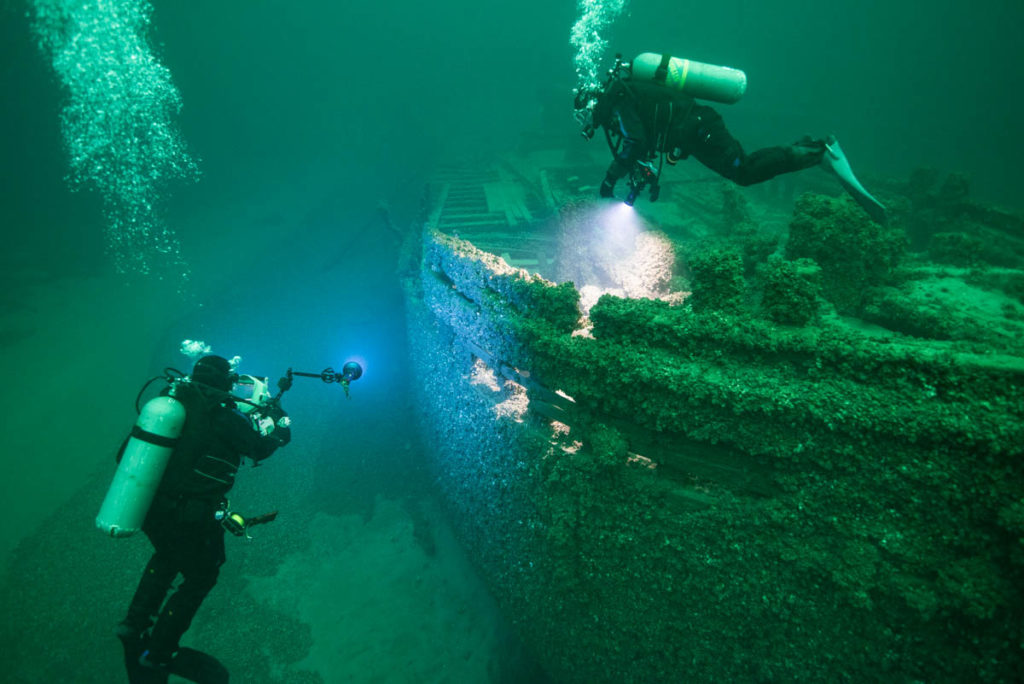NOAA today released for public comment a draft plan for a national marine sanctuary in eastern Lake Ontario and the Thousand Islands region of the St. Lawrence River. In partnership with the state of New York, the proposed sanctuary would manage a nationally significant collection of maritime heritage resources, including shipwrecks, and provide a national stage for promoting heritage tourism and recreation. NOAA is soliciting public comment on the draft environmental impact statement and management plan. Your voice can help shape the future of resources to be managed and interpreted for generations to come.
As the easternmost of the five Great Lakes, Lake Ontario connects North America’s inland seas to the Atlantic Ocean through the St. Lawrence Seaway. The first regional inhabitants, the ancestors of the Haudenosaunee Confederacy, developed a deep understanding and connection to the lake and its resources that remains vibrant today. The designation of a national marine sanctuary would offer opportunities to collaborate with Indigenous nations and tribes, and provide a diversity of perspectives for appreciating North America’s earliest cultures through education and outreach efforts.
In the last 200 years, hidden beneath Lake Ontario’s waters lie shipwrecks and artifacts that reveal the long and fascinating maritime history of the region. “These shipwrecks represent important historical events, such as military conflicts, maritime innovation and entrepreneurship, and American westward expansion,” said Joe Hoyt, national maritime heritage coordinator for NOAA’s Office of National Marine Sanctuaries. “This region occupies a position in the landscape that continues to serve as a gateway to the Great Lakes. The sanctuary will help ensure that the rich history in this eastern transportation corridor is not forgotten.”
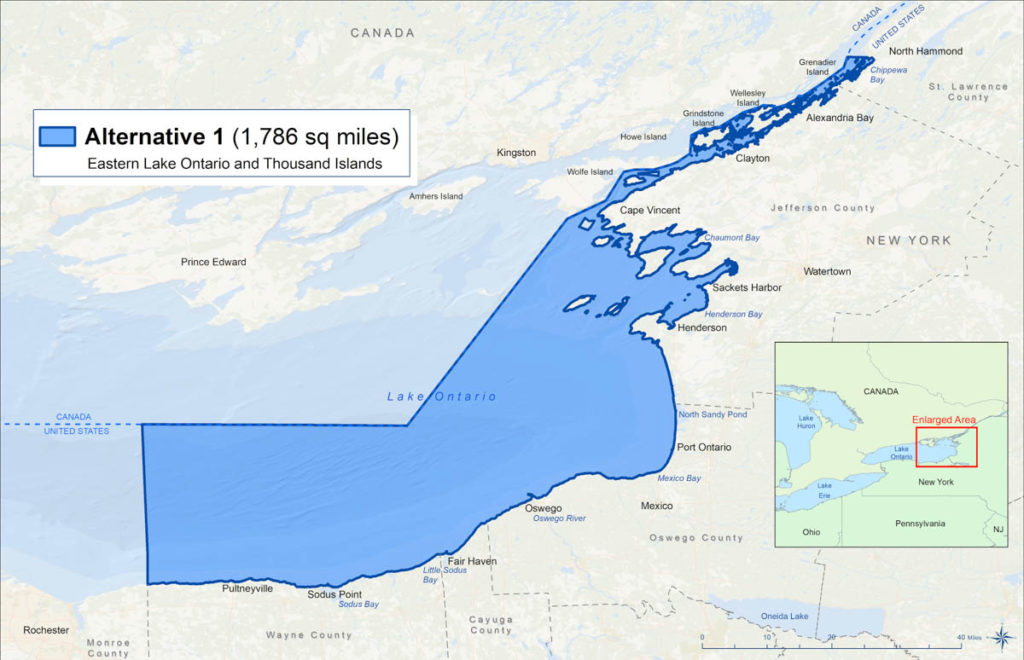
The area under consideration includes up to 1,786 square miles of Lake Ontario waters and bottomlands adjacent to Cayuga, Wayne, Oswego, Jefferson and St. Lawrence counties in the state of New York. NOAA is proposing two alternatives. Alternative 1 contains a portion of eastern Lake Ontario and a section of the St. Lawrence River. This proposed boundary contains 64 known shipwrecks and one aircraft representing events spanning more than 200 years of our nation’s history.
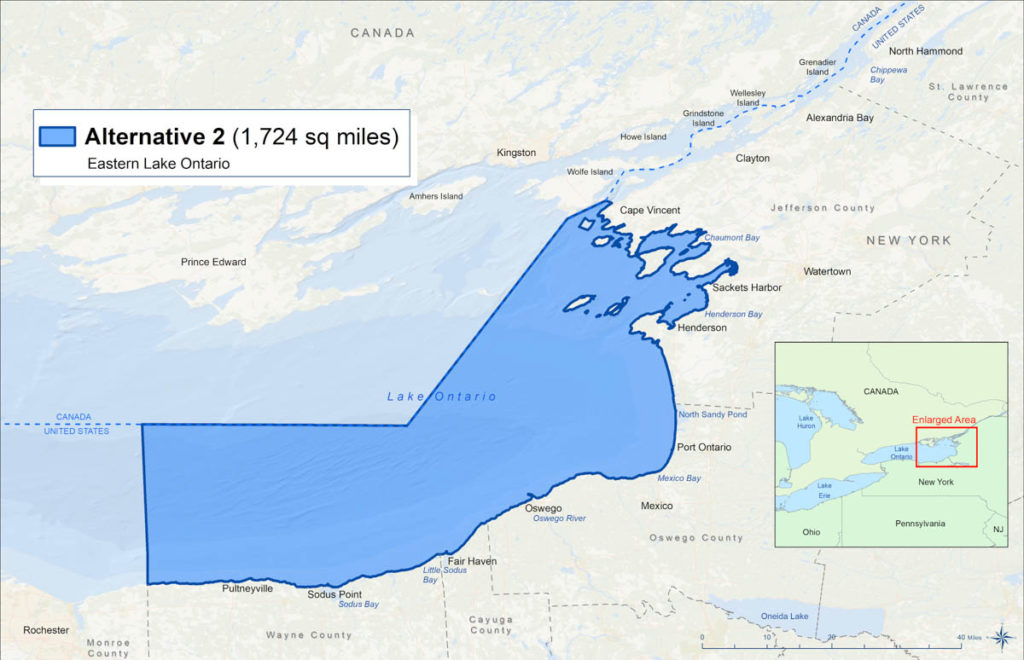
The area includes the oldest known commercial sailing vessel in Lake Ontario, Lady Washington (1797–1803), the oldest known shipwreck in the Thousand Islands region, Iroquoise/HMS Anson (1759–1761), the wreck of the schooner St. Peter(1873–1898), which is listed on the National Register of Historic Places, and a World War II-era Beechcraft C-45 Expeditor aircraft. Certain areas are excluded from the proposed boundary to ensure compatible use with commercial shipping and other activities important to the local, regional, and national economies.
Based on historical records, an additional 20 shipwrecks and three aircraft may be located within these waters, including three vessels related to the War of 1812, several 19th century bulk cargo carriers and steamers, the B-24 Liberator “Get-A-Way Gertie,” a heavy bomber that was lost 77 years ago during a blizzard, and a Canadian Royal Air Force Avro Anson trainer aircraft. NOAA is working collaboratively with Great Lakes historians and Lake Ontario and St. Lawrence River shipwreck experts to determine the accuracy of these historical records and locations of shipwreck sites.
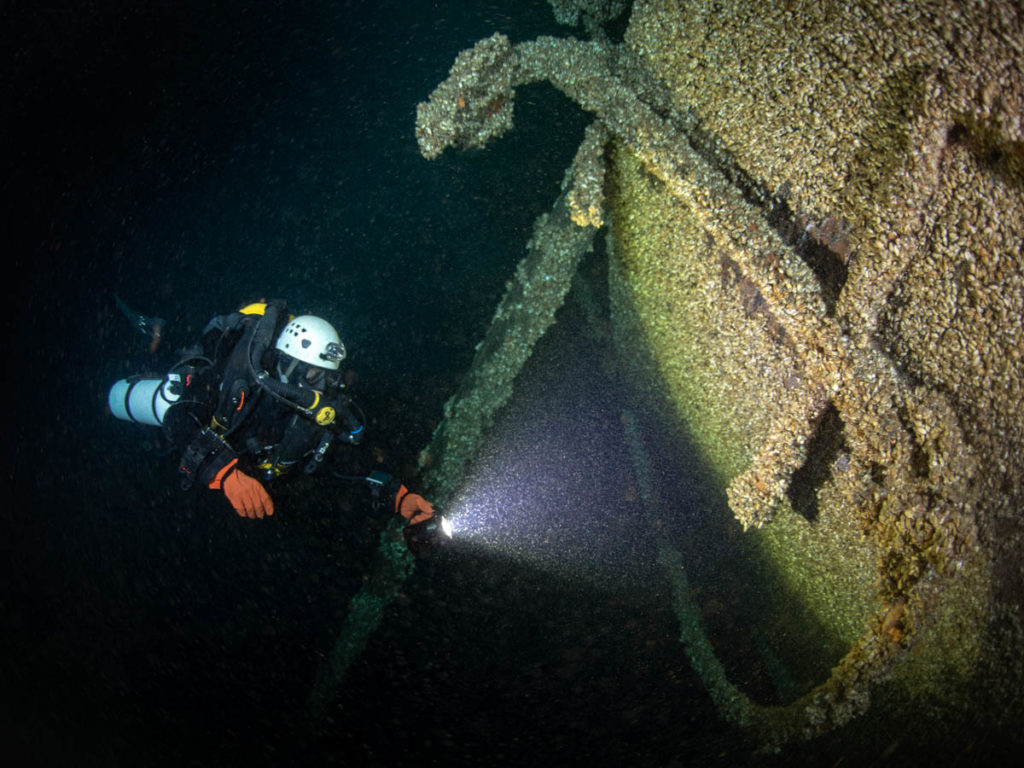
Under Alternative 2, the proposed sanctuary boundary would include 1,724 square miles of eastern Lake Ontario. This area includes the same underwater cultural resources included in Alternative 1 in the eastern Lake Ontario segment, but would not include underwater cultural resources in the St. Lawrence River.
Under both alternatives, NOAA would implement a sanctuary management plan—a roadmap to help conserve and promote the underwater cultural resources that have already been discovered and those that await discovery. The management plan also includes considerations that will help protect sanctuary resources while fostering recreation.
The proposed sanctuary hosts a range of diving opportunities, from shallow sites for snorkeling and recreational diving, to deeper sites for advanced divers. Others are located at depths accessible only by submersible and remotely operated vehicles, and present excellent opportunities to work with research partners.
Community Support
Through the study, protection, and promotion of our diverse maritime legacy, sanctuaries provide the public a chance to learn, share, and connect to the past. Through partnerships with local communities, NOAA would provide a national stage for promoting heritage tourism and recreation in and around this special place. The proposed Lake Ontario National Marine Sanctuary Advisory Council, established in early 2020, provides key community input on the designation of this sanctuary.
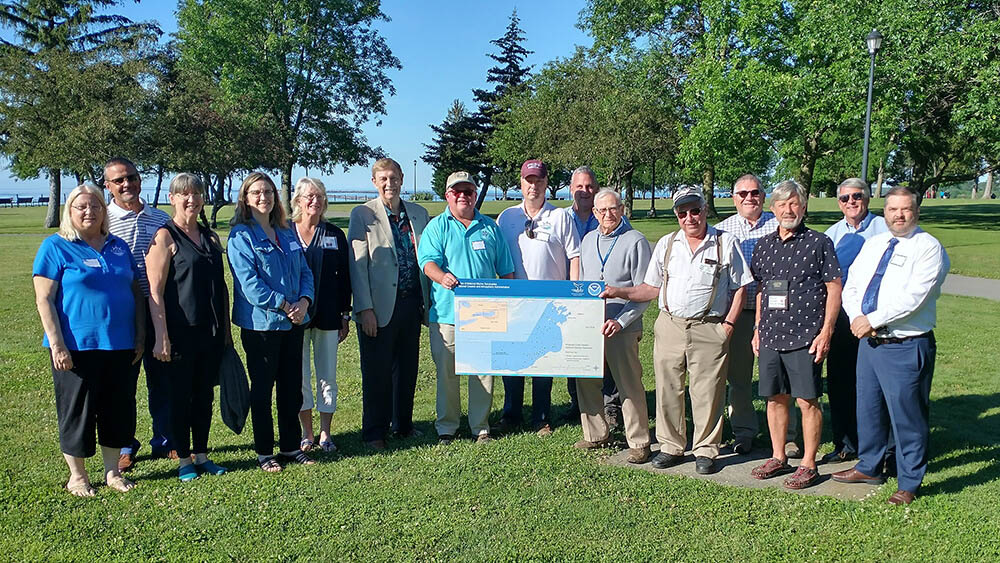
“The Sanctuary Advisory Council has been instrumental in providing a local voice for the national marine sanctuary proposal. From writing the first version of the draft management plan to providing expertise on Lake Ontario communities and resources, the council has shaped NOAA’s proposal,” said Ellen Brody, Great Lakes regional coordinator for NOAA’s Office of National Marine Sanctuaries.
How to Comment
NOAA is soliciting public comment on the draft environmental impact statement (DEIS) for the proposed Lake Ontario National Marine Sanctuary to inform its selection of a preferred alternative. NOAA is also seeking comments on the sanctuary’s proposed management plan, which is included in the DEIS.
Comments will be accepted until September 10, 2021.
If you cannot participate in the virtual meeting, there are several other options for submitting comments.
Online:
Go to the Federal eRulemaking Portal, search for docket number NOAA-NOS-2021-0050.
Mail:
Ellen Brody
Great Lakes Regional Coordinator
4840 South State Road
Ann Arbor, MI 48108-9719
Rachel Plunkett is the writer/editor for NOAA’s Office of National Marine Sanctuaries.






